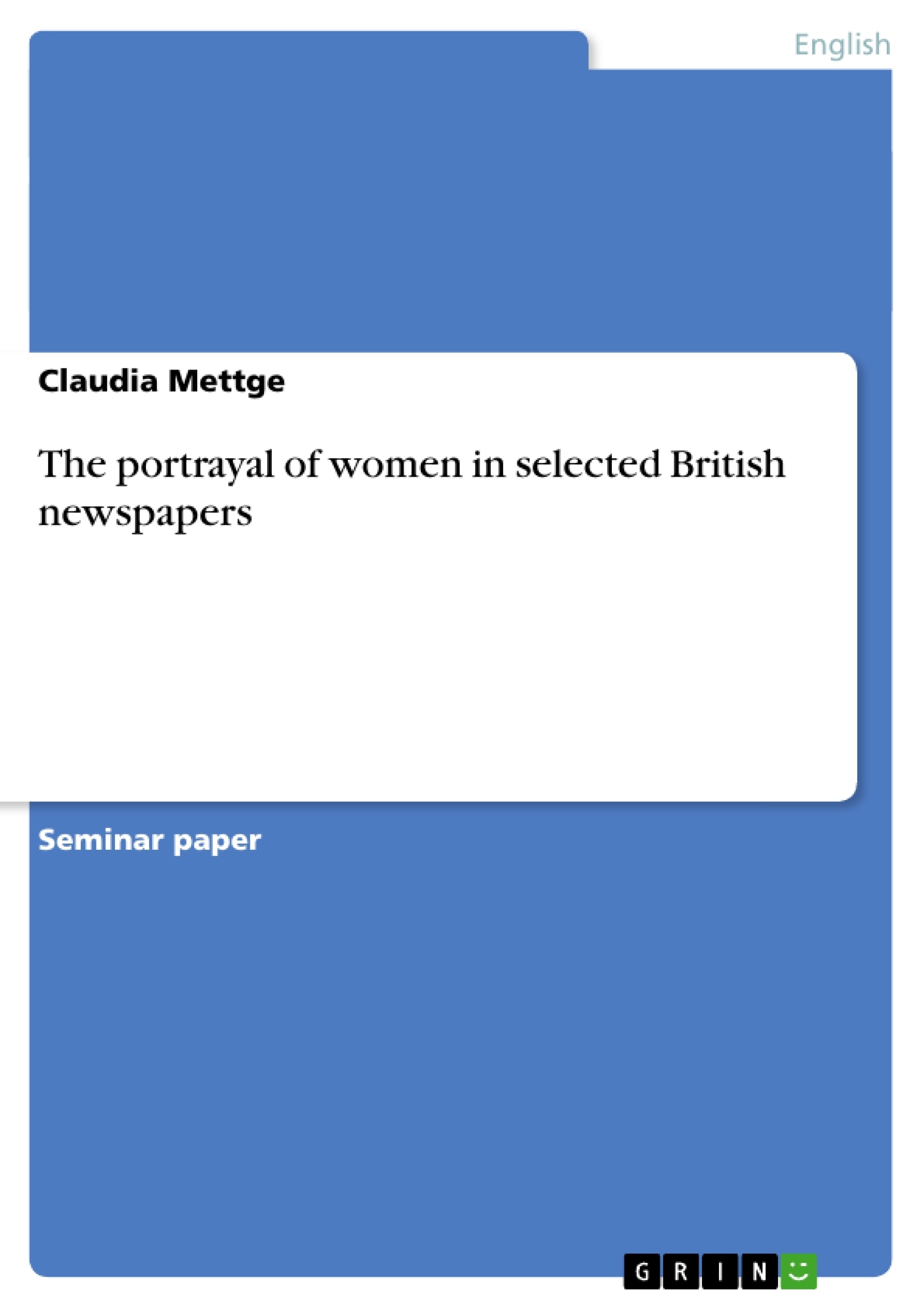The topic of this paper is the representation of women in selected British newspapers. The question which I will try to answer is, whether women are portrayed significantly different from men and if so, in how far this is brought about linguistically.
After giving a short synopsis of why a non- discriminatory treatment of women in the media may be favourable, I will first give statistical evidence from the material collected and supplement this with statistical information on where women stand in society.
I will then go on to analyse staff and correspondents to see in how far women are involved in the perceptible news production or news reception.
After having finished these chapters leading up to the topic of the linguistic analysis, I will then focus on the language in the newspapers. Here, attention will be both on the grammatical and the lexical level.
On the lexical level telling semantic devices will be categorisation, generic usage, marked expressions and naming, among others.
On the grammatical level, clause structures, noun phrases, verb phrases, activity, passivity and others will be of interest.
A final conclusion will summarise the findings.
The material used will be the internet editions of five major British newspapers. These were randomly selected and downloaded in the last week of July 1998. The five newspapers chosen are (in alphabetical order) the Guardian, the Independent, the Mirror, the Star and the Times.
Inhaltsverzeichnis (Table of Contents)
- I INTRODUCTION
- 1.1. TOPIC OF PAPER AND METHOD
- 1.2. REALITY, LANGUAGE, THE MIND AND THEIR RECIPROCALITY
- II THE PRESENTATION OF WOMEN IN NEWSPAPERS
- 2.1. STATISTICS
- 2.1.1. Visible women in reality
- 2.1.2. Visible women in newspaper articles
- 2.1.3. Visible women as recipients and producers of news
- 2.1.3.1. Women as readers
- 2.1.3.2. Women as writers
- 2.2. LINGUISTIC PORTRAYAL OF WOMEN IN NEWSPAPERS
- 2.2.1. Lexical analysis
- 2.2.1.1. Naming
- 2.2.1.2. Stereotypes, categorisations and labels
- 2.2.1.3. Diminutives
- 2.2.1.4. Word choice
- 2.2.1.5. Generic language use
- 2.2.1.6. Women as the unusual
- 2.2.2. Grammatical analysis
- 2.2.2.1. Verb and noun phrases
- 2.2.2.2. Premodification
- 2.2.2.3. Direct and indirect speech
- 2.2.1. Lexical analysis
- 2.1. STATISTICS
- III CONCLUSION
Zielsetzung und Themenschwerpunkte (Objectives and Key Themes)
This paper investigates the portrayal of women in selected British newspapers, aiming to determine if they are portrayed significantly different from men and, if so, how language contributes to this difference. The paper analyzes statistics on the visibility of women in both reality and news articles, as well as their roles as producers and recipients of news. It further delves into the linguistic portrayal of women through lexical and grammatical analysis, examining devices such as categorisation, generic usage, naming, and clause structures.
- The representation of women in British newspapers
- The role of language in shaping perceptions of women
- The impact of media on societal norms and expectations
- The importance of non-discriminatory language in media
- The influence of language on mind and reality
Zusammenfassung der Kapitel (Chapter Summaries)
- I Introduction: This chapter introduces the topic of the paper, the research method, and the importance of non-discriminatory language in media. It highlights the potential influence of language on reality and the mind, citing the theories of Sapir, Whorf, and Schaff.
- II The presentation of women in newspapers: This chapter delves into statistical data on the visibility of women in both reality and newspaper articles. It explores the roles of women as producers and recipients of news, examining their presence as readers and writers.
Schlüsselwörter (Keywords)
This paper focuses on the representation of women in British newspapers, exploring the role of language in shaping perceptions and reinforcing societal norms. Key themes include media portrayal, gender representation, linguistic analysis, lexical analysis, grammatical analysis, and the influence of language on mind and reality.
- Citar trabajo
- Claudia Mettge (Autor), 1998, The portrayal of women in selected British newspapers, Múnich, GRIN Verlag, https://www.grin.com/document/21536



